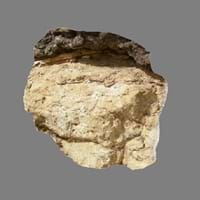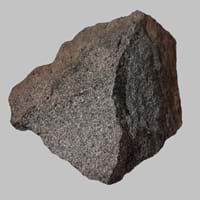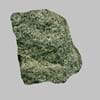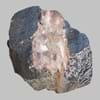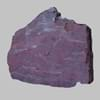Definition
Laterite rock is a type of Sedimentary rock which is rich in iron and aluminium, formed in hot and wet tropical areas
Enderbite rock is an igneous rock which belongs to the Charnockite rock series
Origin
India
Enderby Land, Antarctica
Discoverer
Francis Buchanan-Hamilton
Unknown
Etymology
From Latin later brick, tile + -ite1
From its occurrence in Enderby Land, Antarctica
Class
Sedimentary Rocks
Igneous Rocks
Sub-Class
Durable Rock, Soft Rock
Durable Rock, Hard Rock
Group
Not Applicable
Plutonic
Other Categories
Fine Grained Rock, Opaque Rock
Coarse Grained Rock, Opaque Rock
Texture
Earthy, Massive, Porphyritic
Granular
Color
Brown, Buff, Red
Black, Grey, Orange, Pink, White
Durability
Durable
Durable
Appearance
Rough and Banded
Veined or Pebbled
Interior Uses
Decorative Aggregates, Flooring, Interior Decoration
Bathrooms, Countertops, Decorative Aggregates, Entryways, Floor Tiles, Homes, Hotels, Kitchens, Stair Treads
Exterior Uses
As Building Stone, As Facing Stone, Garden Decoration
As Building Stone, As Facing Stone, Bridges, Paving Stone, Garden Decoration, Office Buildings
Other Architectural Uses
Curbing
Curbing
Construction Industry
Cobblestones, for Road Aggregate, Landscaping, Roadstone
As Dimension Stone
Medical Industry
Not Yet Used
Not Yet Used
Antiquity Uses
Artifacts, Monuments, Sculpture
Artifacts, Monuments, Sculpture, Small Figurines
Commercial Uses
An Oil and Gas Reservoir, Source of bauxite, Used in aquariums
Curling, Gemstone, Laboratory bench tops, Tombstones
Types
Not Available
Not Available
Features
Is one of the oldest rock, Very fine grained rock
Available in Lots of Colors and Patterns, It is One of the Oldest, Strongest and Hardest Rock
Archaeological Significance
Famous Monuments
Data Not Available
Data Not Available
Famous Sculptures
Data Not Available
Data Not Available
Pictographs
Used
Not Used
Petroglyphs
Used
Not Used
Formation
Laterite is a type of sedimentary rock which is generally a reddish weathering product of basalt.
Charnockite is an intrusive igneous rock which is very hard and is formed due to weathering of existing rocks.
Mineral Content
Aluminum Oxides, Biotite, Hematite, Hornblade, Iron Oxides, Manganese Oxides, Micas, Muscovite or Illite, Plagioclase, Pyroxene
Amphibole, Biotite, Feldspar, Hornblade, Micas, Muscovite or Illite, Olivine, Plagioclase, Pyroxene, Quartz
Compound Content
Aluminium Oxide, CaO, Iron(III) Oxide, FeO, Potassium Oxide, MgO, MnO, Sodium Oxide, Phosphorus Pentoxide, Silicon Dioxide, Titanium Dioxide
Aluminium Oxide, CaO, Iron(III) Oxide, FeO, Potassium Oxide, MgO, MnO, Sodium Oxide, Phosphorus Pentoxide, Silicon Dioxide, Titanium Dioxide
Types of Metamorphism
Not Applicable
Contact Metamorphism, Impact Metamorphism
Types of Weathering
Biological Weathering, Chemical Weathering
Biological Weathering, Chemical Weathering
Types of Erosion
Chemical Erosion, Water Erosion, Wind Erosion
Glacier Erosion, Sea Erosion, Water Erosion, Wind Erosion
Grain Size
Fine Grained
Coarse Grained
Fracture
Conchoidal
Not Available
Porosity
Highly Porous
Very Less Porous
Luster
Dull
Not Available
Cleavage
Not Applicable
Not Available
Toughness
Not Available
Not Available
Specific Gravity
Not Available
Not Available
Transparency
Opaque
Opaque
Density
Not Available
2.6 g/cm3
Resistance
Heat Resistant, Pressure Resistant
Heat Resistant, Wear Resistant
Deposits in Eastern Continents
Africa
East Africa, Western Africa
Not Available
Europe
England, Romania, Scotland
Not Available
Others
Not Yet Found
Antarctica
Deposits in Western Continents
North America
Canada, USA
USA
South America
Not Yet Found
Not Available
Deposits in Oceania Continent
Australia
Central Australia, Western Australia
Not Available
All about Laterite and Enderbite Properties
Know all about Laterite and Enderbite properties here. All properties of rocks are important as they define the type of rock and its application. Laterite belongs to Sedimentary Rocks while Enderbite belongs to Igneous Rocks.Texture of Laterite is Earthy, Massive, Porphyritic whereas that of Enderbite is Granular. Laterite appears Rough and Banded and Enderbite appears Veined or Pebbled. The luster of Laterite is dull while that of Enderbite is not available. Laterite is available in brown, buff, red colors whereas Enderbite is available in black, grey, orange, pink, white colors. The commercial uses of Laterite are an oil and gas reservoir, source of bauxite, used in aquariums and that of Enderbite are curling, gemstone, laboratory bench tops, tombstones.
